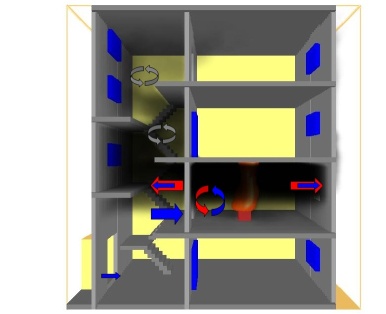
Situation 1:
- no ventilator
- closed windows
- open doors
Fresh air flows into the fire area through the lower part of
the entrance door. This causes turbulences between the fresh air
and the smoke layer.
In the upper area of the door smoke flows into the stairway which
fills up with smoke progressively.
If windows are open in the
fire area, smoke flows out of the builing.
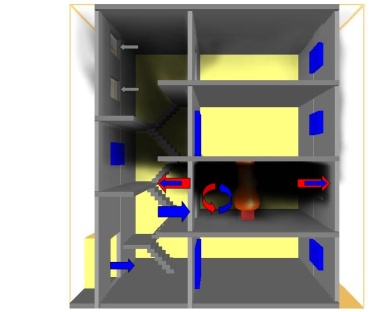
Situation 2:
- no ventilator
- open windows
- open doors
Fresh air flows into the fire area through the lower part of
the entrance door. This causes turbulences between the fresh air
and the smoke layer.
In the upper area of the door smoke flows into the stairway which
fills up with smoke progressively. Due to the less dense smoke there
will be a chimney effect in the stairway.
If windows are
open in the fire area, smoke flows out of the builing.
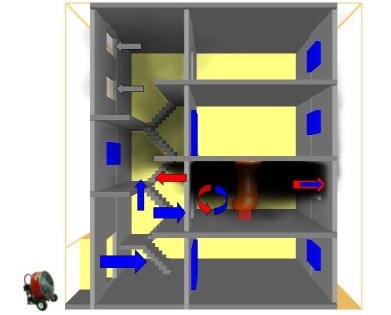
Situation 3:
- ventilator in front of the building
- closed windows in stairway
- open doors
Basically the same as situation 2, but there is more flow through
the stairway and therefore less smoke.
If windows are open in
the fire area, smoke flows out of the builing.
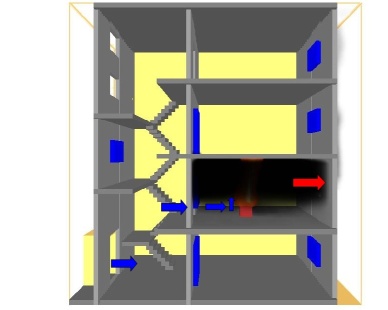
New: Smoke stopper - no ventilator:
- no ventilator
- open windows
- open doors
Fresh air flows into the fire area through the lower part of
the entrance door. Because the fresh air flow is forced to occur
at floor level there is less turbulence. No smoke enters the stairway
through the upper part of the door.
If windows are open in
the fire area, smoke flows out of the builing.
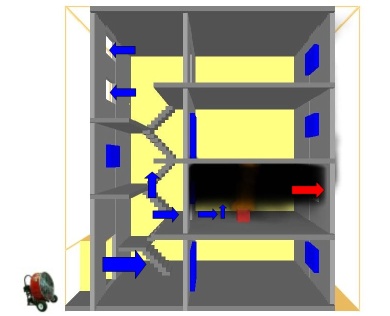
New: Smoke Stopper and ventilator:
- ventilator in front of the building
- open windows
- open doors
Basically the same as situation 2, but there is more flow through
the stairway and therefore no smoke at all.
Again no turbulences
in the entrance area to the fire compartment.